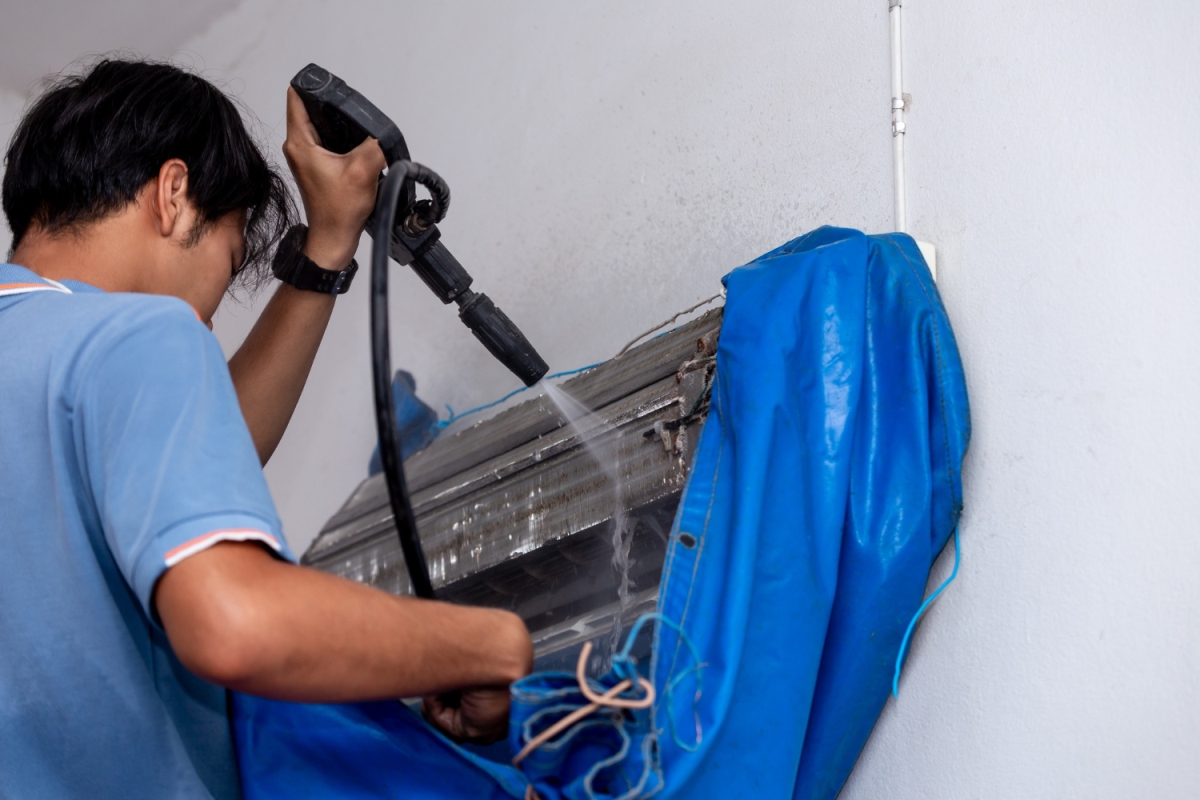Heating and Air Conditioning Energy Consumption-Tracking with Smart Thermostats
-
 By
Michael Haines
By
Michael Haines
- Dec 30, 2023
Heating and Air Conditioning Energy Consumption-Tracking with Smart Thermostats
Written by Michael Haines 12/30/2023 Smart thermostats are emerging as a key player in energy management. They're designed to optimize energy use by adjusting the temperature based on whether you're home or asleep. Estimates suggest that smart thermostats could be in about 40% of homes, offering significant energy savings and helping in grid management.
In today’s homes and commercial spaces, while traditional fossil fuel-based heating systems are still common, there’s a noticeable shift towards electric heating, specifically heat pumps. These systems, now more efficient even in colder climates, are increasingly favored due to their cost-effectiveness and alignment with broader clean energy initiatives promoted at various government levels.
Globally, there's a significant move towards renewable energy sources, with projections indicating nearly half of all electricity could come from renewables by 2030. This shift is reshaping the energy landscape, especially for electric heating. For instance, in sunny states like California, the daily pattern of electricity demand forms what’s known as a “duck curve.”
This curve shows a significant need for energy in the early morning and evening, especially in summer. However, in colder regions, such as Vermont, a similar pattern is emerging in winter, driven by the demand for electric heating. These patterns highlight the growing need to predict and plan for electricity usage, ensuring the grid can handle the demand, particularly during extreme weather conditions [1].
Smart thermostats are emerging as a key player in energy management. They're designed to optimize energy use by adjusting the temperature based on whether you're home or asleep. Estimates suggest that smart thermostats could be in about 40% of homes, offering significant energy savings and helping in grid management.
However, their widespread use could also lead to synchronized demand peaks, especially during cold mornings when everyone’s system turns on at once. This synchronized behavior can strain the electrical grid, especially if it happens before sunrise when solar energy isn’t available to meet the demand.
Future predictions of heating demand, particularly electric heating, have traditionally been based on models that don’t always account for real-world data, like the impact of smart thermostats. These models often rely on historical data and assumptions, which can be inaccurate.
Some approaches use weather data to model demand, while others build detailed simulations of various building types to predict energy needs. However, these methods can be limited by regional differences in building styles and occupant behavior.
To better understand and predict the impact of smart thermostats and other factors on heating demand, we’re now seeing the use of extensive datasets from smart thermostats. These datasets provide a wealth of information about actual heating system performance and occupant behavior across various building types and locations.
By analyzing this data, we can get a more accurate picture of heating demand, tailored to specific regions and circumstances. This approach offers a promising path forward for understanding and planning for our heating needs in a world that's rapidly shifting towards electric heating and renewable energy sources.
Home Temperature Data with the Power of Internet-Connected Thermostats
In terms of heating and cooling systems, knowing how households manage their thermostats is crucial. Traditionally, collecting this data meant relying on surveys or physical visits by auditors. However, these methods have limitations, often depending on self-reported data which can be inaccurate. People tend to report lower temperature settings due to social norms or memory lapses.
Enter the era of Internet-connected thermostats. Brands like Nest have revolutionized the way we understand home heating and cooling behaviors. These smart devices, connected to the internet, allow users to adjust settings online or via smartphones. As of now, over four million homes in North America use these thermostats, and their popularity is surging in other countries across the world.
Goodman Gas Furnaces are leading the charge in the evolving field of home heating with their advanced smart home integration capabilities. This innovation helps homeowners to seamlessly connect their furnaces to their existing smart home systems.
With this integration, controlling your home's temperature becomes a task of unmatched convenience and precision. Imagine adjusting your home's heating from your smartphone or tablet, whether you're in the comfort of your living room or miles away. Goodman's range of options in smart home integration caters to the modern homeowner's need for efficiency, comfort, and control, transforming the way we interact with our home heating systems.
Internet-connected thermostats provide a goldmine of data, logging indoor temperatures, thermostat settings, and even furnace and air conditioner cycle times. They offer a real-time, detailed view of a home's heating and cooling operations, presenting a unique opportunity for researchers and policymakers to understand energy usage patterns better.
However, there are challenges. The data from these connected homes isn't always representative of the national average, as they are often opted into by a specific demographic. Additionally, manufacturers are generally hesitant to share this valuable data.
So, how do we dig deeper into the qualitative aspects of thermostat usage? The most effective methods involve interviews and direct observation. Decades of research have shown how households interact with programmable thermostats. Yet, these methods are costly and reach only a fraction of the population.
Here’s where online crowdsourcing comes into play. Platforms like Amazon Mechanical Turk offer an inexpensive, rapid way to collect data from diverse geographical locations. Unlike traditional surveys, crowdsourcing can gather more varied data, including pictures and videos, providing a more accurate and dynamic understanding of thermostat usage.
One innovative use of crowdsourcing is to conduct longitudinal studies. For example, researchers can collect pictures of thermostat settings across seasons from the same participants. This method offers a fine-tuned understanding of how behavior and energy use are interconnected.
While internet-connected thermostats offer unprecedented access to real-time data, combining this technology with innovative research methods like crowdsourcing can truly unlock the mysteries of household energy consumption. This combination not only provides a clearer picture of actual thermostat usage but also paves the way for more effective energy-saving strategies.
The transition to smart, internet-connected thermostats is more than just a technological leap. This is a paradigm shift in understanding residential and commercial heating and cooling habits. This fusion of technology and research offers an unprecedented opportunity to analyze and optimize energy use, paving the way for smarter, more efficient homes. As we embrace this new era, we're not just adjusting our thermostats – we're reshaping our approach to home energy management.
[1] Pritoni, M., Meier, A. K., Aragon, C., Perry, D., & Peffer, T. (2015). Energy efficiency and the misuse of programmable thermostats: The effectiveness of crowdsourcing for understanding household behavior. Energy Research & Social Science, 8, 190-197. https://doi.org/10.1016/j.erss.2015.06.002. Available at: ScienceDirect.

 and now, NASCAR Racing Sponsor
and now, NASCAR Racing Sponsor












